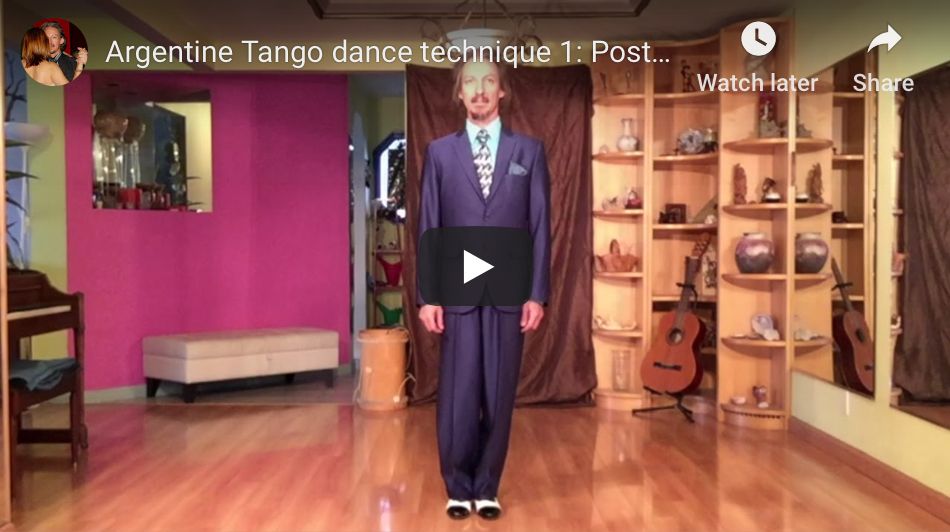
Argentine Tango dance technique 1: Posture
We, humans, are unique among all known species. Our upright posture manifests extraordinary qualities.
From the perspective of a milonguero, good posture is not merely instrumental.
By the way we stand up and present ourselves, we tell our own story, who we are, what we strive for, our dreams, our ideals, our thoughts and emotions. Through working on our posture we work not only on our body but on our entire persona. Therefore, from the perspective of a milonguero, good posture is not merely instrumental, achieved and developed only for the purpose of dancing well, but, in addition to our dance, the way we exist, presented to ourselves and everybody. What we can see in our posture (whether it’s the same or different from what everyone else sees) informs about us and shows what we can improve about ourselves.
Technical details and exercises:
- Legs and feet together, your weight distributed equally between them.
- Bring your weight to one of your feet. Your vertical axis should displace in the direction of the foot that gets your weight.
- Inside edge of your free of weight leg’s shoe in contact with the floor (“inside edge position”).
- Your supporting leg’s foot resting comfortably on the floor, conducting the weight of your body through it to the floor.
- Knees close to each other. Your knees maintaining a constant relation to your axis, which passes through the center of your body, from the top of your head to the center of the base of your body in regard to your weight distribution on one foot or between both feet.
- Hips leveled, both ilium of your hip bone at the same plane parallel to the floor, aligned to your transversal plane.
- Torso aligned with a vertical axis, resting on your head, which rest on your legs.
- Neck and head aligned with the same vertical axis line.
- Your head resting on your neck, which consequently rests on your torso, torso on your hips and hips on your legs and feet. Alignment of all your body parts to your central axis becomes essential.
- Eyes looking forward. Sight aligned with the floor, looking to the horizontal line.
If you are in the San Francisco Bay Area and want to learn to dance Tango, you can: